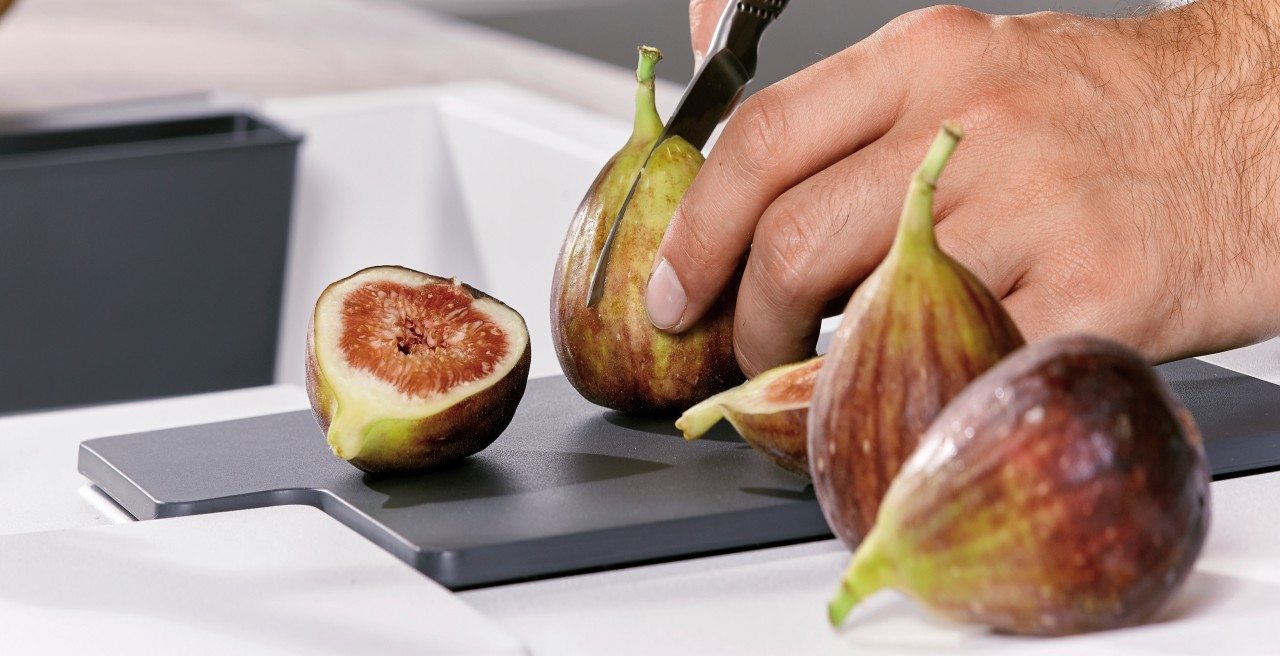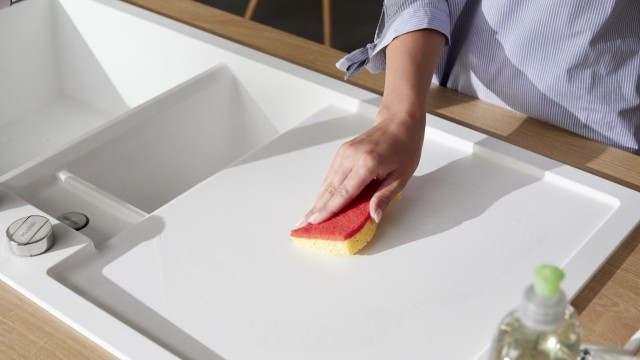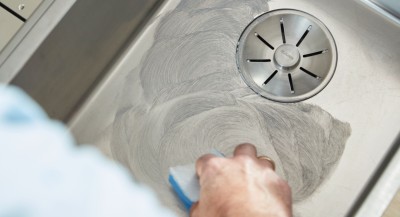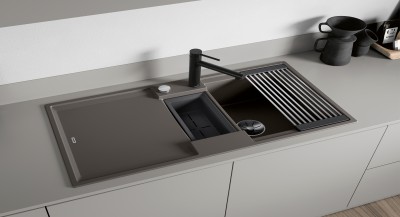Cleaning a kitchen sink is one of those chores that needs to be done every day. It doesn’t really matter what kind of sink you have. Whether it’s stainless steel, ceramic or Silgranit, the daily cleaning routine is always the same. A damp sponge, a little rinse, wipe off and then wipe dry. Voilà! But is this process really the same for all materials and colours? How can I ensure that a white sink will stay white long-term?
Treat all sinks the same for your daily cleaning routine
It makes no big different whether your sink is made of stainless steel or whether you have a glossy ceramic sink or a white Silgranit sink. When it comes to daily cleaning in the kitchen, all materials are treated the same way. It doesn’t take long and allows you to integrate cleaning up the kitchen into your evening routine with no trouble at all. The sink is all wiped clean in less than two minutes. It’s best to use a soft sponge and a little washing-up liquid for this purpose, plus a microfibre cloth to rub it dry. If your local water is hard, the droplets of water that evaporate from the sink bowl after you wash up can leave a thin layer of limescale behind over time.
How to combat limescale in the sink
Chalk is a naturally occurring component of our tap water. The degree of water hardness for the local area indicates how much calcium and magnesium is contained in the local water network. If the degree of hardness is between 1 and 4, you have very soft water. The higher the level, the more limescale can end up being deposited on the sink when droplets of water evaporate.





